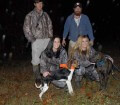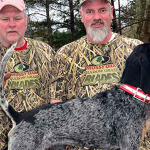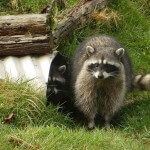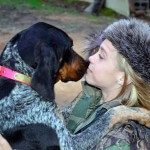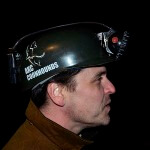John’s Note: Keith Tate (205-527-1862) has been training coon dogs for 15 years, mainly for Dexter Whatley of Kildare Junction in Cass County, Texas. To produce dogs that have the potential to be Grand Nite Champions, the trainer and the owner of the dogs must have the same philosophy about the dogs that are bought and trained. Even though each man performs a different task, they work in harmony like the defensive coordinator and the offensive coordinator on a professional football team. Tate and Whatley share the same mindset of what’s required to produce a Grand Nite Champion coon hound.
Phillips: Keith, when someone says that he has a dog that he believes you can train to become a Grand Nite Champion, what do you expect that coon dog to be able to do?
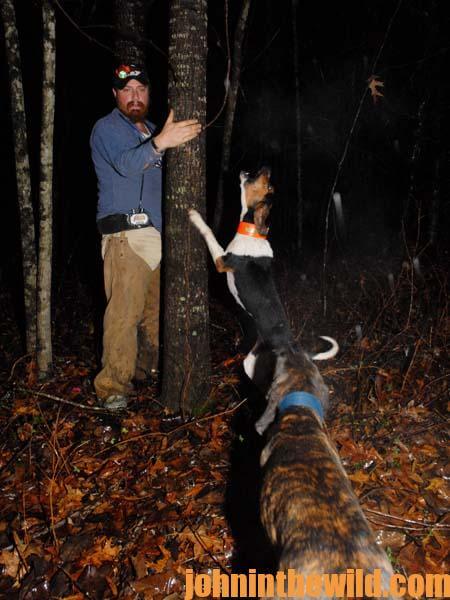 Tate: I expect that dog to be able to tree coons by itself and avoid any other animals that aren’t coons. I expect that dog to be fast. I define fast as finding a coon track and putting that coon up a tree in a hurry. I expect the dog not to fight other dogs at the tree and to be very obedient to the commands of load up, unload, come here, sit and stay.
Tate: I expect that dog to be able to tree coons by itself and avoid any other animals that aren’t coons. I expect that dog to be fast. I define fast as finding a coon track and putting that coon up a tree in a hurry. I expect the dog not to fight other dogs at the tree and to be very obedient to the commands of load up, unload, come here, sit and stay.
Phillips: Keith, how do you train a coon dog not to run a deer or rabbit?
Tate: A rabbit is what I call a glitch. A coon hound may jump a rabbit and run it half a city block or a block and then return to the coon track. But a deer produces a lot of scent because it’s a bigger animal. At times, a coon dog may get close enough to actually see the deer. When a coon dog sees a deer, it gets really excited and feels like it has to chase that deer. You can solve this problem is with an electronic training collar. These training collars have gotten so sophisticated that you can reach out and touch the dog that’s running the deer. With that handheld training device, you can correct the dog and discourage him from running a deer. A dog can’t help being a dog. A hound is bred to chase animals by their smell and by seeing the animals. So, when you have a coon dog that starts running deer, rabbit, possums, coyotes, deer or other off-game, you now can correct that dog with an electronic collar to help it learn that this is not the game you want it to run. I explain it this way. Everybody loves peanut butter, a staple in most American homes. However, if every time you grab that jar of peanut butter, you have a little bit of electronic correction, you won’t go anywhere around peanut butter. Your desire for peanut butter will be gone. By using this training process, we have better ways to communicate with coon hounds what is acceptable and not acceptable for a coon hound to do.
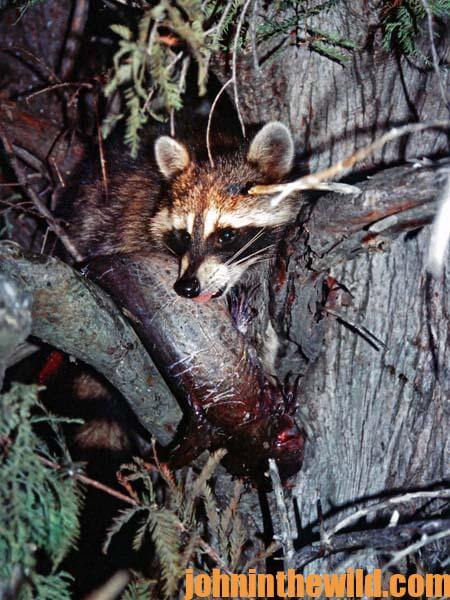 Whatley: Just like I buy coon dog pups that have the genetics of Grand Nite Champions, I also want to know if the parents, grandparents and great-grandparents have a tendency to run game other than coons. I believe that you can breed the tendency to run deer out of a coon dog.
Whatley: Just like I buy coon dog pups that have the genetics of Grand Nite Champions, I also want to know if the parents, grandparents and great-grandparents have a tendency to run game other than coons. I believe that you can breed the tendency to run deer out of a coon dog.
Tate: I’m now training two of Dexter Whatley’s dogs that absolutely will not run a deer. He’s been able to breed the tendency to run a deer out of these two dogs. So, I know that we can breed the tendency to run off-game out of the dogs we raise and train.
John: Keith, if you have a Grand Nite Champion female bred to a Grand Nite Champion male, what will you expect those pups to do?
Tate: I’ll expect those pups to become pretty good coon dogs. Some of them never will be competitive coon hounds, however, some of those pups will be exceptional coon hounds. When we’re looking for a great coon hound, the first thing we look for is: how good were their dad and mom, their granddaddy and grandmother, and their great granddaddy and great grandmother to get some idea of what kind of potential that pup has for becoming a great coon dog and possibly a Grand Nite Champion.
Click here to find Kindle and print books written by John E. Phillips on all kinds of outdoor subjects.


